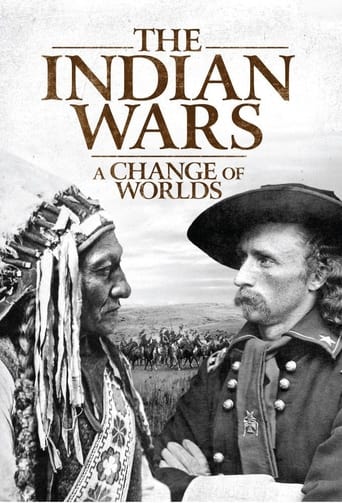The Indian Wars - A Change of Worlds (2016)
The Indian Wars - A Change of Worlds
2016
The year 1540 was a crucial turning point in American history. The Great Indian Wars were incited by Francisco Vazquez de Coronado when his expedition to the Great Plains launched the inevitable 350-year struggle between the white man and the American Indians. From that point forward, the series of battles between the military and civilian forces of the United States and the native American Indians began when blood was shed and ultimately tens of thousands of lives were lost on both sides. The Battle of Tippicanoe, the Battle of Horseshoe Band, all three Seminole Wars and the Battle of Little Big Horn were some of the most important conflicts that led up to the last massacre, the Battle of Wounded Knee, where America's landscape would be forever changed!
Seasons & Episode

In Pre-Columbian America, millions of Native Americans were spread across the continents, made up of a large number of unique civilizations and tribes. As the Spanish began exploring what they called the New World in the 1400s, the world they knew began to change forever.

The first English settlement of Jamestown leads to the English dominating the East Coast. As they push up against Native American lands to the west, conflict becomes inevitable.

French settlers set up forts and trading posts across Canada, and partnered with the Native Americans in order to trap game. As tensions between the French and English colonists boiled over into the French and Indian War, the Native tribes provided assistance to their trading partners in hopes of driving the English out.

After overthrowing their monarch, the United States government begins their own relationship with the Native Americans. But the country pushes expansion still further west, the country begins to break its treaties with the Native Americans.

While the United States fights itself in the Civil War, the western border territories find themselves engaged in the Dakota War of 1862, a bloody conflict between settlers and the Native Americans.

The slaughter of the buffalo populations in the western United States is used to corral Native Americans into reservations. But these reservations were still not far enough from the reach of the United States.

In the 20th Century, and to this day, Native American tribes continue to fight against the government for their rights and safety.
The year 1540 was a crucial turning point in American history. The Great Indian Wars were incited by Francisco Vazquez de Coronado when his expedition to the Great Plains launched the inevitable 350-year struggle between the white man and the American Indians. From that point forward, the series of battles between the military and civilian forces of the United States and the native American Indians began when blood was shed and ultimately tens of thousands of lives were lost on both sides. The Battle of Tippicanoe, the Battle of Horseshoe Band, all three Seminole Wars and the Battle of Little Big Horn were some of the most important conflicts that led up to the last massacre, the Battle of Wounded Knee, where America's landscape would be forever changed!
Watch Trailer
Free Trial Channels























